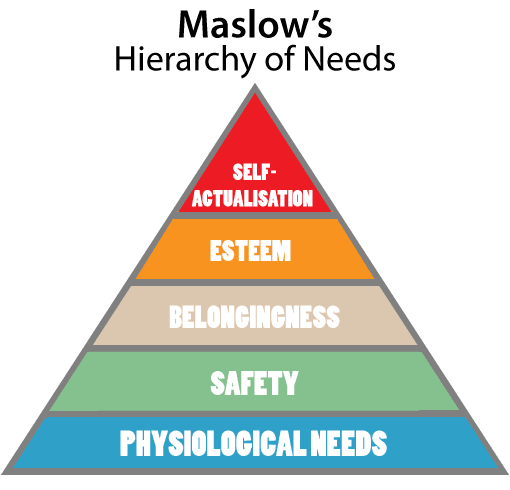Dave Salisbury urges us to reconsider our current training philosophy, as we may be prioritizing the wrong things or perhaps missing things out altogether.
During a recent job interview for a training position, I heard the following from a trainer: “Maslow’s Hierarchy of Needs is the only foundation our training department needs.”
Then, the leader of the training department went on to praise the knowledge of the trainers they led and summarized: “The trainers know everything, so they do not need to learn from the front line.”
Thinking this was a test, I responded regarding lessons learned, how a trainer’s first duty is to be a learner and advocated how to encourage training improvement.
I live the words of John F. Kennedy: “Leadership and learning are indispensable to each other.”
Mentally, I regarded the “trainer knows everything” attitude as audacious at best. So, as I listened to this conversation, I was shocked!
Does Training Really Need to Fit Into Maslow’s Hierarchy of Needs?
Maslow’s Hierarchy of Needs is a five-tier model that many training programmes are designed around. It has a pyramidal structure, with each tier representing a different need, as shown below.

The model works so that only by hitting the bottom tier need can you progress to the next level up and so on.
In the contact centre, we have typically fit our programmes around this model, developing programmes to meet each of the five needs, so we can unlock all of our advisors’ potential.
Sounds great, right?
Well, while Maslow attempted to quantify his regime on needs, he found less than 5% of a population fit this model.
So, is Maslow’s Hierarchy of Needs really the be all and end all when it comes to contact centre training? Seemingly not.
Where Maslow is found, logic has been suspended, and the needs of the frontline agent are not being met through corporate training processes and procedures.
Much has been written, both for and against Maslow’s Hierarchy of Needs and why proponents choose one side or another where the hierarchy of needs is concerned.
Suffice it to say, I am not a fan, nor a detractor of Maslow, I simply offer that Maslow might not have been applicable to a generalized audience, and as such, there is sufficient need to grow from Maslow to a high-performance training department.
An alternative model to Maslow’s Hierarchy of Needs, is Nick Drake Knight’s Continue and Begin philosophy. Hear Nick explain this himself in the podcast below.
The Contact Centre Podcast – Episode 9:
Call Center Coaching: How To Sustain Learning And Make It Fun!
For more information on this podcast visit Podcast – Contact Centre Coaching: How to Sustain Learning and Make it Fun!
For more information on this podcast visit Podcast – Contact Centre Coaching: How to Sustain Learning and Make it Fun!
Trainers Need to Keep Learning and Adapting Their Training Plans
Long have I advocated for contact centre leaders, beginning with trainers, to spend time regularly and consistently on the phones to best know how to train new staff and understand the dynamics of change.
I know of several companies who have used this model to improve employee morale, show effective leadership and improve their contact centres dramatically. This all because the leaders spend time every month on the phone.
Yet some trainers and other call centre leaders continue to think that working the frontlines is beneath their station and office.
I met a vice president of customer relations who monitored the call volume, and every time the call centre went red due to calls holding, he would stop meetings, grab a headset, and start working wherever there was a desk free. He encouraged his other leadership staff to do the same and his call centre was a model of learning.
5 Ways to Improve the Contact Centre Training Experience
Keeping each of the previous points in mind, let’s take a look at the following as steps to begin improving the contact centre training experience.
1. Immediately Ditch Maslow’s Hierarchy of Needs
Talk to the employees of every training class and find out what motivates them, and then have the trainers mirror the students’ motivation to improve learning.
What a person “needs” is, in my opinion, never hierarchical, nor are those needs met through one-size-fits-most motivation techniques.
We are all motivated by different things and each of us has different core drivers for learning. Some of us are motivated by a purpose, others through personal development, and then you have negative motivators like impatience.
People are motivated and learn in different ways. Our training programmes need to reflect this.
2. Get out of the Office
Stop hiding in a cubicle and spend time on the phones.
How can a trainer know how to train, and remain current in the skills and behaviours taught, if they are not on the phones?
Show me a successful trainer who does not know the work they are training and I will show you an organization in serious trouble, where learning has stopped and resource waste is astronomical.
The contact centre is a unique environment that must flex, be structured and serve in the dichotomies of change.
With this in mind, as leaders and trainers, we must develop flexibility, collaboration and teamwork to survive.
Another similar tip is to change the learning environment, so we meet different advisors’ learning styles. For more on this point, read our article: 16 Customer Service Training Ideas – With Activities, Games and Helpful Techniques
3. Share Experiences to Build Trust
Learning cannot occur in a vacuum; nor does learning occur with “helicopter trainers” doing everything for the representative.
The only sure method for improving training requires building trust between trainer and trainee, as well as between organizational leadership, the new hire and other frontline employees. This builds confidence through sharing experiences over time.
When trust grows into faith, collaboration occurs naturally, and when leaders build trust, they are naturally developing smoother operations, processes, and procedures.
4. Encourage Learning Through a Shared Social Platform
Social networking is not just about finding a new job or meeting a need; social networking promotes “belongingness” as the premier motivating factor pushing human behaviour.
So, encourage belonging through trust, honest communication and making connections with people.
One of the worst problems in the modern call centre is the wealth of quantitative data, where the people get lost and forgotten in the forest of statistical reports.
When the monthly reports come in, when the yearly reports are submitted, ask yourself: “Have I remembered the person?”
If not, those reports are less than meaningless and possess no value.
For our advice from OVO Energy’s contact centre on creating an effective social platform for your contact centre, read our article: A Simple Way to Improve Communication in the Contact Centre
5. Use the Power of Society to Meet Organizational Goals
If we publicly validate great performance, that helps agents to form the social identity in training and that emotional engagement enhances team attachment and begins to spark social comparison.
Social comparison theorizes that individuals within a team determine their own personal worth by how they compare to the people around them. If we understand this concept, we can foster an agent’s motivation levels and help them to generate a positive self-image.
This concept helps to set the foundations of your contact centre’s leadership structure, while promoting order in the often chaotic world of call centres.
Final Thoughts
I did not secure the position I was interviewing for, yet I am delighted that the interview bore no fruit.
When contact centre managers refuse to train, and when trainers refuse to learn, the mental disingenuousness of that society is the dominant hindering factor, not economic conditions.
A trainer’s first job is to be a learner, then lead others in learning.

As a final bonus, here are three questions that I would have asked as the interviewer, in order to assess whether your trainer is truly invested in developing their own ability as a learner:
- What book are you currently reading to improve professionally?
- What book are you reading for fun?
- What did you learn this week? Who did you learn it from?
Written by: Dave Salisbury, an Operations and Customer Relations Specialist
For more content like this from Dave, make sure you give the following articles a read:
- What “Going the Extra Mile” REALLY Means in Customer Service
- Key Performance Indicators (KPIs) Are Damaging Employee Engagement
- Customer Service Surveys – Bringing Sanity to the Survey
Author: Dave Salisbury
Reviewed by: Jonty Pearce
Published On: 24th Feb 2020 - Last modified: 10th Dec 2025
Read more about - Skills, Dave Salisbury, Employee Engagement, Skill Development, Training and Coaching






































